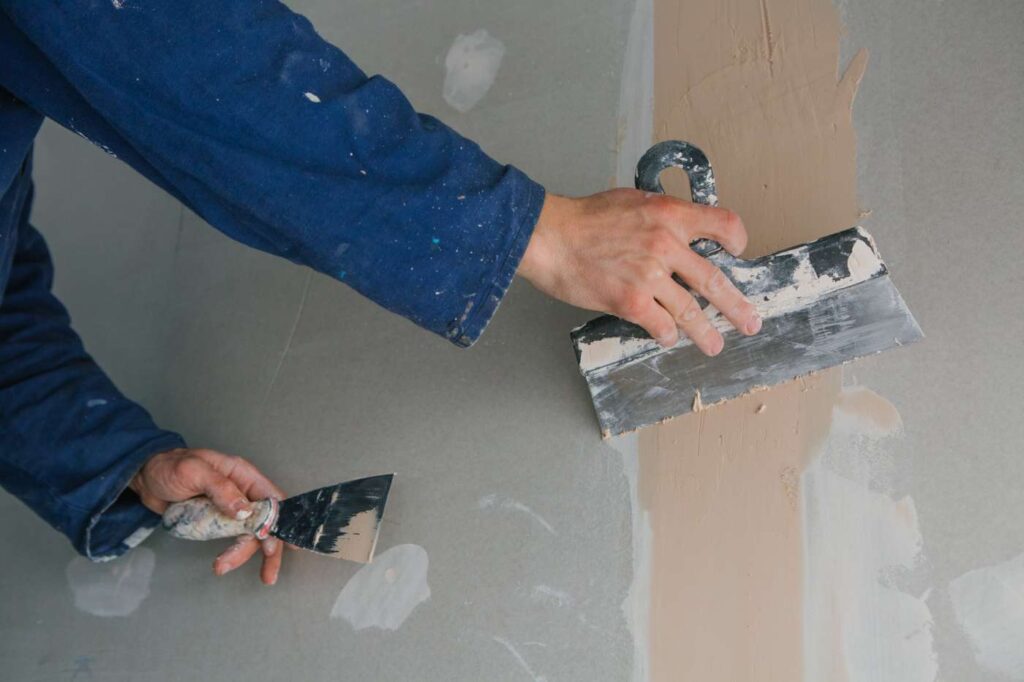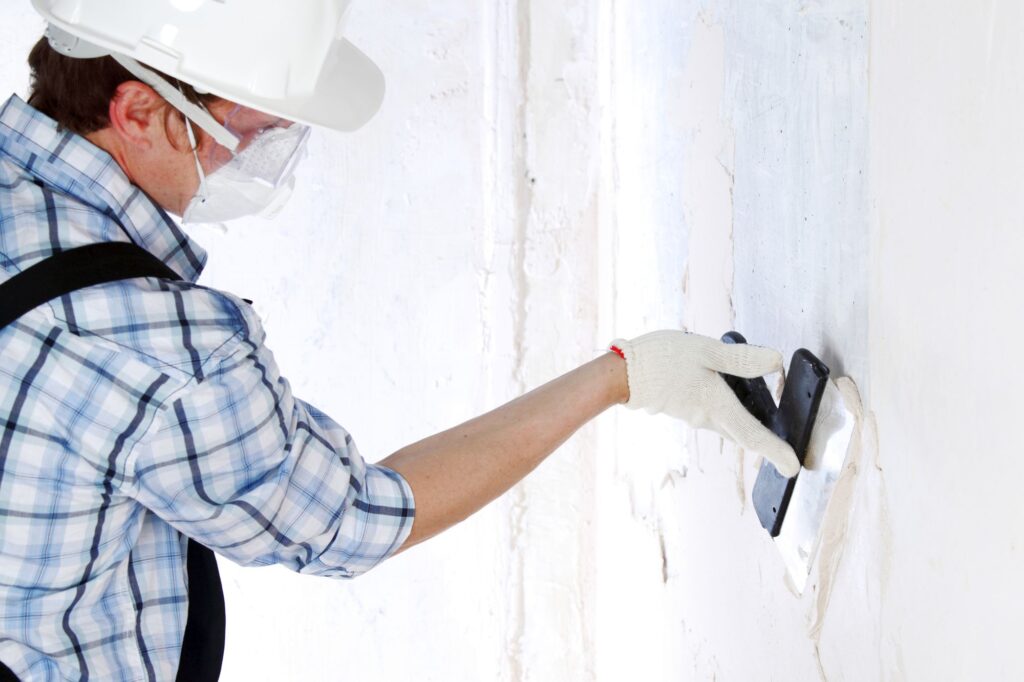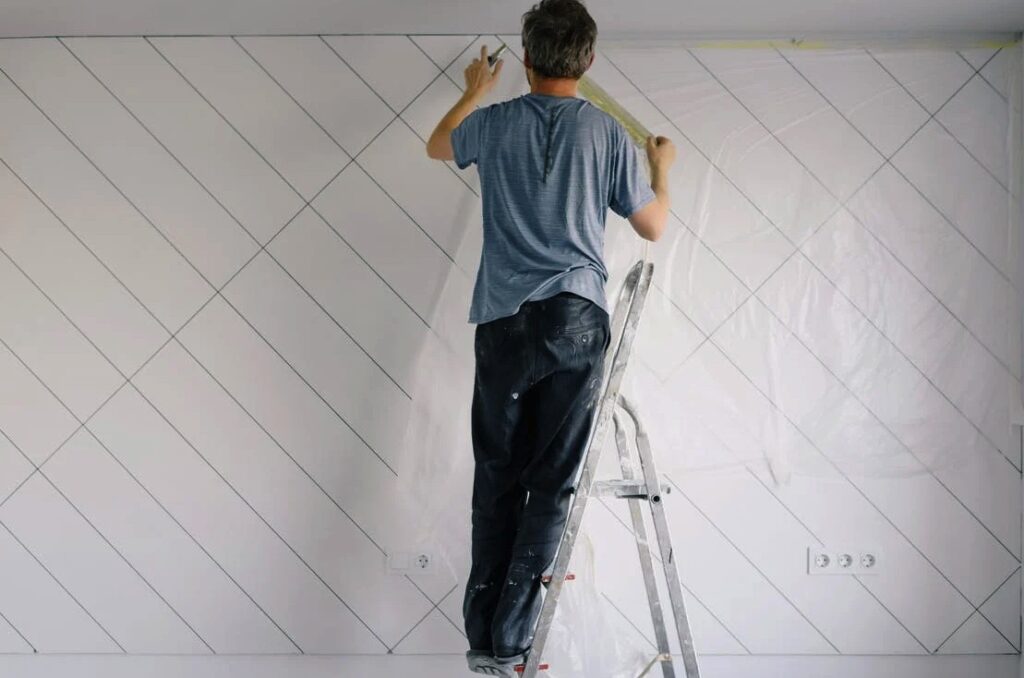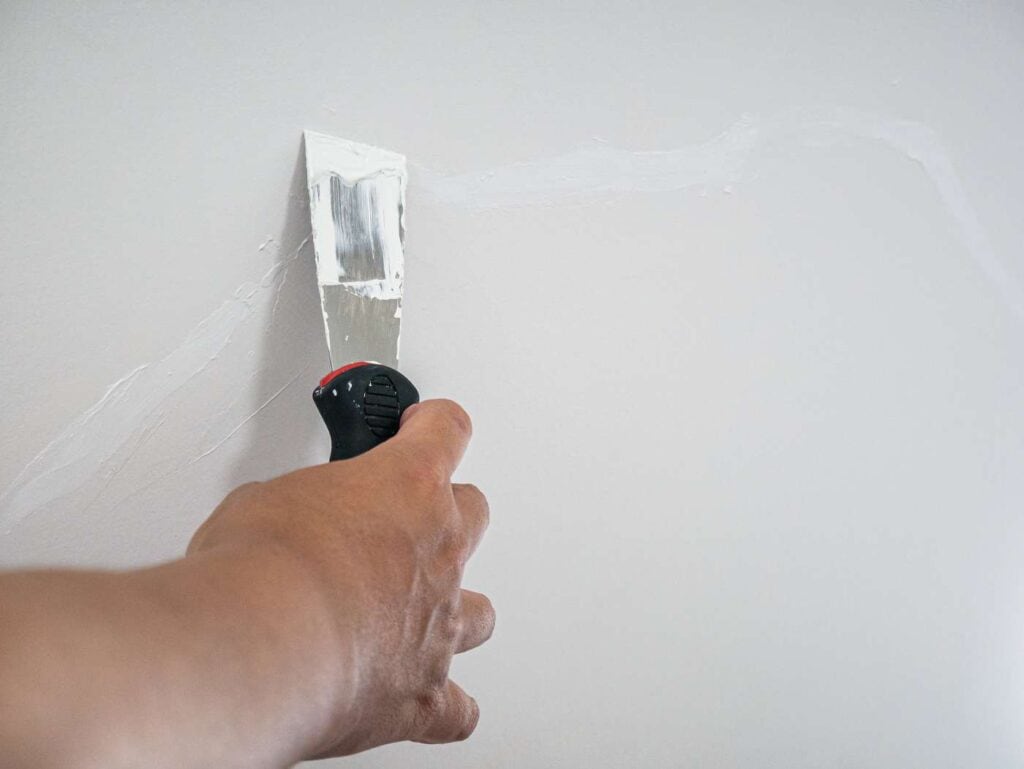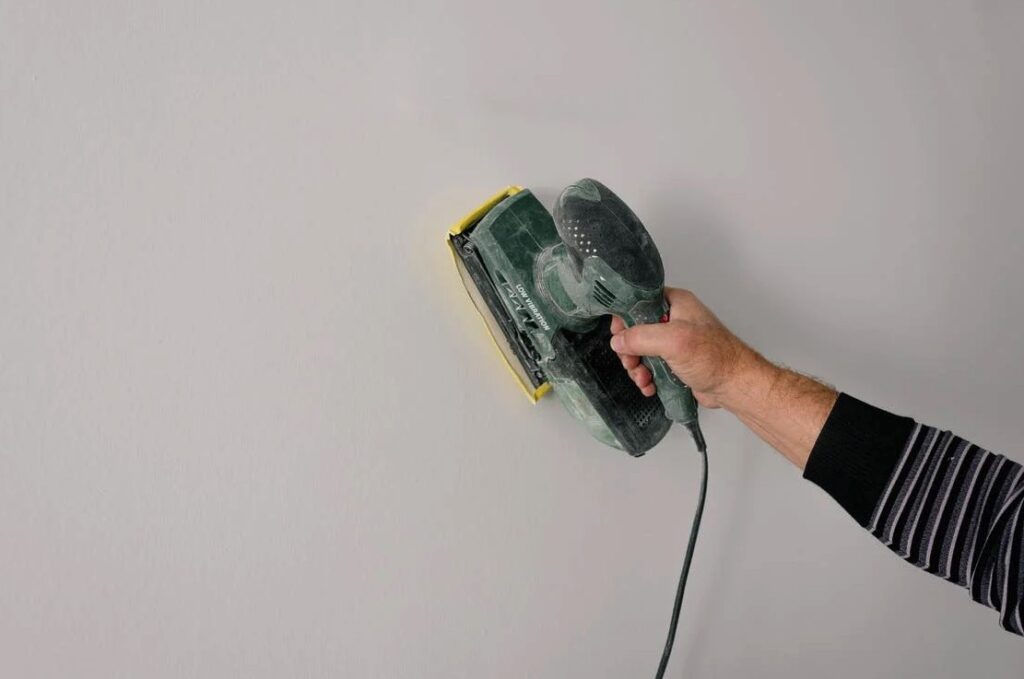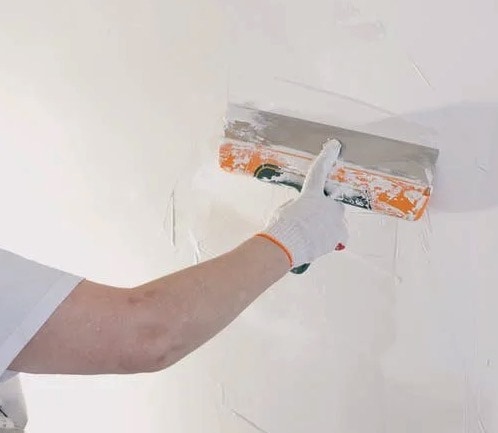Plastering, an essential component of the building and construction industry, has stood the test of time, evolving through centuries to meet the dynamic needs of modern architecture and interior design. From the ancient pyramids to contemporary homes, plastering has played a pivotal role in shaping our built environment. In this post, we will uncover the layers of this skilled trade, examining its place within the broader construction industry, the diverse applications of plastering work, and the prospects for professionals in this field. Whether you're a seasoned plasterer, a newcomer to the trade, or intrigued by the craftsmanship behind the walls and ceilings surrounding us, join us as we explore the depth and breadth of the plastering industry.
The Role Of Plastering In Construction
Plastering, a method deeply rooted in the construction industry, is a protective and aesthetic layer over surfaces, ensuring durability and a polished look. This ancient craft, evolving alongside construction technologies, plays a pivotal role in both the structural integrity and visual appeal of buildings. Through insights from various sources, we explore the indispensable role of plastering in construction, highlighting its functions, types, and the innovation it brings to the field.
Protective Layer and Aesthetic Finish: Plastering adds a protective layer over concrete surfaces, safeguarding against atmospheric effects like leakage, cracks, or shrinkage. Beyond its protective role, plastering provides a complete, aesthetically pleasing finish, transforming rough surfaces into smooth, paint-ready canvases.
Diverse Types for Various Needs: The construction world utilizes different types of plaster—each serving specific purposes. From traditional lime and gypsum plasters to modern cement-based mixes, the choice of plaster affects the finished surface's durability, weather resistance, and texture. Innovations like waterproof and eco-friendly plasters cater to specialized construction needs, emphasizing the industry's adaptability.
Historical and Modern Applications: Plastering's significance spans ancient civilizations to contemporary construction, adapting to the changing demands of architecture and design. Its application in modern construction enhances the visual appeal and contributes to the structural integrity, moisture resistance, and thermal insulation of buildings.
Technological Advancements: The plastering industry has embraced digitalization and automation, with tools like 3D modelling and automated machines streamlining the process. These advancements increase efficiency, reduce labour, and open new avenues for creative and sustainable construction practices.
Sustainability and Eco-Friendliness: Reflecting the growing environmental consciousness, the plastering industry is shifting towards sustainable practices. Using recycled materials, organic plasters, and energy-efficient methods highlights the industry's commitment to reducing its environmental footprint while ensuring the longevity and health of structures.
Challenges and Future Prospects: Despite its ancient roots, plastering faces modern challenges, such as the skills gap and the need for continuous innovation. The industry's future lies in overcoming these challenges through education, adaptation to new technologies, and focusing on sustainability.
Plastering As A Profession
Plastering, a cornerstone of the construction industry, combines the artistry of shaping interiors with the science of protective coatings. This profession not only caters to the aesthetic enhancement of buildings but also plays a crucial role in protecting structures against environmental elements. Here, we delve into the multifaceted world of plastering as a profession, exploring its roles, responsibilities, pathways to entry, and the evolving landscape of opportunities it presents.
The Role Of A Plasterer:
A plasterer is a skilled tradesperson who applies plaster to walls and ceilings, creating smooth or decorative finishes. This role extends beyond mere application; it involves mixing ingredients to form plaster, ensuring a complete and stable finish on various structural components, and sometimes, crafting decorative textures or designs as per client preferences. Plasterers work across a spectrum of environments, from residential homes to commercial buildings, contributing to spaces' functionality and aesthetic appeal.
Pathways To Becoming A Plasterer:
Becoming a plasterer can follow several routes, including formal apprenticeships, vocational training, or on-the-job learning experiences. Apprenticeships, often offered through trade unions or construction firms, provide a blend of hands-on training and theoretical knowledge guided by experienced professionals. Alternatively, vocational schools offer focused programs that equip students with the necessary skills and potentially facilitate internships through professional connections.
Skills And Qualifications:
Plastering demands unique skills, including proficiency with construction tools, a deep understanding of plastering materials and techniques, and a keen eye for detail. Safety awareness on construction sites and the physical stamina to handle the job demands are paramount. Critical thinking and problem-solving abilities are essential for navigating challenges during plastering projects. While formal qualifications can vary, a Construction Skills Certification Scheme (CSCS) card is often required to work on construction sites in the UK.
The Work Environment:
Plasterers typically spend their workdays on their feet, applying plaster and troweling with precision. The job may involve working at heights, in dusty conditions, and wearing protective gear to safeguard against potential irritants. Despite the physical demands, the role offers a sense of accomplishment through tangible transformations of spaces.
Career Outlook And Opportunities:
The plastering profession offers a promising career outlook, with opportunities for growth and specialization. Experienced plasterers may progress to supervisory roles, become self-employed contractors, or explore niches such as decorative plastering. Continuous learning and adaptation to new materials and techniques are crucial to thriving in this evolving field.
The Plastering Industry Landscape
The plastering industry, a vital component of the construction sector, has experienced a dynamic evolution over the years, shaped by economic shifts, technological advancements, and changing market demands. This landscape is characterized by its resilience and adaptability, navigating through economic downturns and capitalizing on periods of growth. Here, we delve into the plastering industry's current state and future outlook, drawing insights from various sources to paint a comprehensive picture.
Historical Challenges And Recovery
Historically, plastering has faced significant challenges, particularly during economic downturns. The early and mid-1990s saw a decline in construction activity, reducing demand for plastering services. This period was marked by a weak economy and a slow housing market, causing many to leave the industry and businesses to fail. However, the late 1990s and early 2000s witnessed a revival driven by strong demand for building, extending, and renovating homes. The industry faced another setback with the 2008 economic crisis, leading to a downturn in demand for plastering services. Despite these challenges, the industry has shown resilience, with recovery observed in the mid-2010s attributed to rising wages, low interest rates, and increased confidence in employment.
Technological And Sustainable Innovations
The plastering industry is not just surviving; it's innovating. The adoption of ecological materials and the push towards sustainability reflect a growing environmental consciousness within the sector. Companies increasingly rely on sustainable products and techniques, such as recycled plasterboard and organic plasters, to minimize environmental impact and ensure healthier living environments. Technological advancements, including digitalization and automation, have revolutionized planning and design processes, leading to more efficient workflows and reduced physical strain on workers. Innovations like 3D printing and the development of energy-efficient plasters are setting new standards for the industry, demonstrating its commitment to innovation and sustainability.
Market Trends And Future Outlook
Several vital trends shape the plastering industry's future. The demand for innovative and environmentally friendly plaster solutions is expected to rise, driven by technological advancements and changing consumer behaviours. Despite potential challenges in adapting to new technologies and materials, the industry's prospects appear promising, with ample opportunities for growth, innovation, and sustainable development. The commercial sector, in particular, is poised for a boost, thanks to increased business confidence and consumer spending, with private housing investment and maintenance and repair contracts expected to drive significant growth.
Competitive Landscape And Strategic Insights
The competitive landscape of the plastering industry is diverse, with a mix of established players and innovative startups vying for market share. This competition fosters a culture of innovation and excellence as companies strive to differentiate themselves through quality, pricing, and customer satisfaction. The industry's dynamism is further fueled by technological innovations, regulatory changes, and evolving consumer preferences, presenting business challenges and opportunities.
FAQs About Plasterer
Plastering involves applying a protective and decorative layer of plaster onto surfaces like walls and ceilings. It plays a crucial role in providing durability, aesthetic appeal, and structural integrity to buildings.
Plaster types include traditional lime and gypsum plasters and modern cement-based mixes. Each type offers specific properties such as weather resistance, texture, and durability.
Technology has brought about advancements like 3D modelling, automated machines, digitalization, streamlining processes, improved efficiency, and opening new avenues for sustainable construction practices.
Yes, there's a growing emphasis on sustainability within the plastering industry. This includes using recycled materials, eco-friendly plasters, and energy-efficient methods to minimize environmental impact.
Plastering offers promising career prospects with opportunities for growth, specialization, and advancement into supervisory roles or self-employment.
Innovations And Trends In Plastering
Automation And Advanced Technologies
Automation has made its way into plastering, with machines and tools designed to streamline the application process. Cement plastering machines, for example, automate the traditional method of applying plaster by hand, offering faster, more consistent results. These machines enhance efficiency and reduce the physical strain on workers, promising a smoother and more uniform finish.
Sustainable And Eco-Friendly Materials
Sustainability is a significant trend across all industries, and plastering is no exception. The use of environmentally friendly materials is on the rise, with a focus on reducing carbon footprints and sourcing sustainably. Lightweight alternatives to traditional plaster are being developed to offer the same strength and effectiveness without the environmental impact. Additionally, innovations in drywall plastering include moisture and mould-resistant materials, addressing common issues associated with traditional drywall.
Soundproof And Fire-Resistant Solutions
As urban living spaces become more confined, the demand for soundproof and fire-resistant plastering solutions has increased. Modern plastering techniques now incorporate materials that significantly improve sound insulation and fire resistance, adding a layer of safety and comfort to homes and commercial spaces.
Aesthetic And Functional Innovations
The aesthetic appeal of plastering has been dramatically enhanced through various innovations. Polished plaster, or Venetian plaster, is gaining popularity for its ability to create stunning finishes that mimic natural stone, metallic textures, or even bespoke patterns. Additionally, pre-decorated drywall options and magnetic and writable drywall panels are emerging, offering functional and creative solutions for residential and commercial spaces.
Embracing Tradition With Modern Techniques
Interestingly, there's a resurgence in the appreciation for traditional plaster walls, known for their charm and durability. This trend highlights a desire to blend the aesthetic and functional benefits of classic plastering with the efficiencies of modern techniques. Whether connecting contractors with clients through digital platforms or integrating sustainable practices, the plastering industry is finding ways to honour its heritage while embracing the future.
Future Outlook
The future of plastering looks bright, with ongoing advancements in technology and materials expected to continue. The industry will likely see further integration of automation, an increased focus on sustainability, and the development of new materials that could revolutionize wall construction and finishing.
Conclusion
Plastering is crucial in the building and construction industry, serving as a protective and aesthetic layer over surfaces, ensuring durability and a polished look. It has evolved over centuries to meet the dynamic needs of modern architecture and interior design. Plastering's significance spans from ancient civilizations to contemporary construction, adapting to the changing demands of architecture and design.
The plastering industry has embraced digitalization and automation, with tools like 3D modelling and automated machines streamlining the process. This has increased efficiency, reduced labour, and opened new avenues for creative and sustainable construction practices. The industry is also shifting towards sustainability and eco-friendliness, using recycled materials, organic plasters, and energy-efficient methods.
Plastering faces challenges such as the skills gap and the need for continuous innovation. The industry's future lies in overcoming these challenges through education, adaptation to new technologies, and focusing on sustainability.
A plasterer is a skilled tradesperson who applies plaster to walls and ceilings, creating smooth or decorative finishes. They work across various environments, from residential homes to commercial buildings, contributing to spaces' functionality and aesthetic appeal.
Pathways to becoming a plasterer can include formal apprenticeships, vocational training, or on-the-job learning experiences. Skills and qualifications include proficiency with construction tools, a deep understanding of materials and techniques, and a keen eye for detail. The work environment may involve working at heights, in dusty conditions, and wearing protective gear.
The plastering profession offers a promising career outlook with opportunities for growth and specialization.
The plastering industry has faced significant challenges, including economic downturns and the 2008 crisis. Despite these setbacks, the industry has shown resilience, with recovery observed in the mid-2010s. Technological advancements, such as digitalization and automation, have revolutionized planning and design processes, leading to more efficient workflows and reduced physical strain on workers. Innovations like 3D printing and energy-efficient plasters are setting new standards for the industry.
Several vital trends shape the future of the plastering industry. The demand for innovative and environmentally friendly plaster solutions is expected to rise, driven by technological advancements and changing consumer behaviours. The commercial sector is poised for a boost, with private housing investment and maintenance and repair contracts expected to drive significant growth.
The competitive landscape of the plastering industry is diverse, with established players and innovative startups vying for market share. Innovations in plastering include:
- Automation.
- Sustainable materials.
- Soundproof and fire-resistant solutions.
- Aesthetic and functional innovations.
- A resurgence in appreciation for traditional plaster walls.
The future of the plastering industry looks bright, with ongoing advancements in technology and materials expected to continue. The industry will likely see further integration of automation, an increased focus on sustainability, and the development of new materials that could revolutionize wall construction and finishing.
Content Summary
- Plastering, an integral part of construction, has evolved over centuries to meet modern architectural needs.
- From ancient pyramids to contemporary homes, plastering has shaped our built environment.
- This blog delves into the plastering industry's layers, applications, and prospects.
- Plastering safeguards surfaces while enhancing their aesthetic appeal.
- Lime, gypsum, and cement-based plasters cater to diverse construction needs.
- Plastering not only beautifies but also strengthens buildings against environmental elements.
- Digitalization and automation streamline plastering processes, enhancing efficiency.
- The industry is shifting towards sustainability with eco-friendly materials and methods.
- Challenges like skills gap and innovation drive the industry's future trajectory.
- Plastering blends artistry with protective coatings in construction.
- Plasterers mix, apply, and shape plaster for smooth finishes and decorative designs.
- Apprenticeships and vocational training are common pathways to becoming a plasterer.
- Skills include tool proficiency, material knowledge, and attention to detail.
- Plasterers work in varied environments, contributing to spaces' functionality and appeal.
- Growth opportunities abound, with paths to supervision or specialization.
- The plastering industry's evolution reflects economic shifts and technological advancements.
- Recycled materials and sustainable practices drive innovation in plastering.
- Future demand for eco-friendly solutions is anticipated to rise.
- The competitive landscape fosters innovation and excellence among plastering businesses.
- Automation improves efficiency, offering consistent plaster application.
- Sustainable materials reduce environmental impact without compromising effectiveness.
- Soundproof and fire-resistant plasters enhance safety and comfort in confined spaces.
- Innovations like polished plaster and decorative drywall cater to aesthetic preferences.
- Traditional plaster walls see a resurgence, blending charm with modern efficiency.
- The future of plastering promises continued technological and material advancements.
- Automation will likely play a more significant role, enhancing efficiency further.
- Sustainability will drive the development of eco-friendly plastering solutions.
- New materials will revolutionize wall construction and finishing techniques.
- Plastering serves as both protection and beautification in construction.
- Plasterers' skills encompass mixing, applying, and crafting decorative finishes.
- Formal apprenticeships or vocational training pave the way to becoming a plasterer.
- Safety awareness and physical stamina are crucial in the plastering profession.
- Plastering offers a sense of accomplishment through tangible transformations.
- Career growth opportunities include supervisory roles and specialization.
- Economic shifts and technological advancements shape the plastering industry.
- Sustainable practices drive innovation with a focus on reducing environmental impact.
- Demand for eco-friendly solutions is expected to increase in the future.
- Competition fosters innovation and excellence among plastering businesses.
- Automation streamlines plaster applications, ensuring consistency and speed.
- Eco-friendly materials provide effective alternatives with minimal environmental impact.
- Soundproof and fire-resistant plasters enhance safety and comfort in urban spaces.
- Decorative options like polished plaster cater to diverse aesthetic preferences.
- Traditional plaster walls merge charm with modern efficiency in construction.
- The future of plastering holds promise with ongoing technological advancements.
- Automation will likely play a more significant role in enhancing efficiency.
- Sustainability will drive the development of eco-friendly plastering solutions.
- New materials will redefine wall construction and finishing standards.
- Plastering balances protection and aesthetic enhancement in construction.
- Plasterers' expertise lies in applying and shaping plaster for desired finishes.
- Formal training or apprenticeships provide pathways to a successful plastering career.



